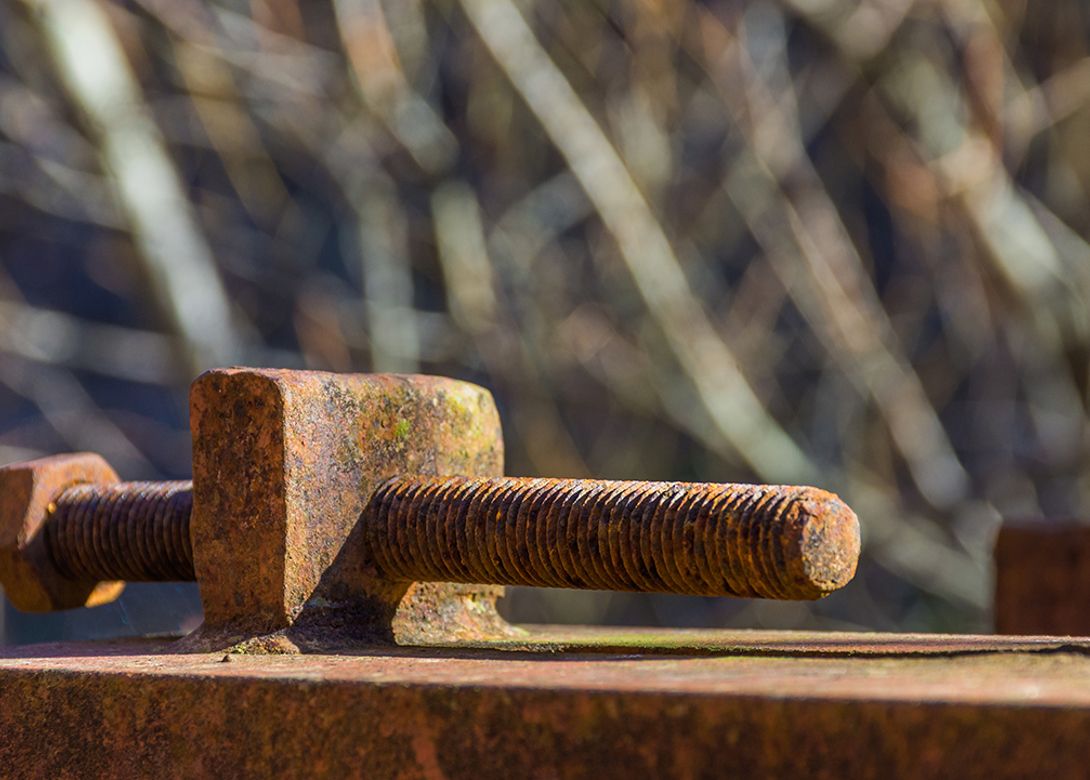
By Bob Carlisle, president, Concrete Fastener Systems Inc
Corrosion results in billions of dollars of lost income annually. Determining if a fastener will be attacked by corrosion can be a primary factor in achieving cost efficiency for long-term maintenance. Fasteners will corrode and may lose some load carrying capacity if they are installed in corrosive areas or exposed to different types of corrosive materials.
The areas and materials that can create a corrosive environment range from pressure treated wood, salt water, ocean salt air, fertilisers, as well as exposure to two dissimilar metals and other elements that are corrosive.
Types of stainless corrosion
Uniform attack – this type of general corrosion occurs when there is an overall breakdown of the passive film. The entire surface of the metal will show a sponge type of façade because halogens penetrate the passive film of stainless and allow for corrosion. Active halogens are fluorine, chlorine, bromine, iodine and astatine.
Crevice corrosion – this type of corrosion with stainless fasteners in seawater environments is due to the low PH of salt water. Chlorides pit the passivised surface in the area where low PH saltwater attacks the exposed metal. Lacking the oxygen to repassivise, corrosion spreads. This corrosion is common in oxygen deprived spaces, such as under a fastener head.
Galvanic corrosion – putting two dissimilar metals in an electrolyte produces an electrical current. The current flows from the anodic metal and towards the cathode metal. This process will slowly remove material from the anodic metal. Seawater can act as an electrolyte, which is the reason that galvanic corrosion is a common problem. 316 stainless steel may be the most effective in a marine environment.
Pitting – similar to galvanic corrosion this type of corrosive action is the result of passivation in a small spot on stainless steel that becomes an anodic. The passivised part remains a cathode and causes pit type corrosion.
Intergranular corrosion – stainless steels contain a small amount of carbon. At extremely high temperature, as in welding, the carbon uses chrome to form chromium carbide around it, and creates areas of chrome deficiency that lessen corrosion protection.
Stress corrosion – may be referred to as stress corrosion cracking or chloride stress corrosion. Chlorides can be the greatest antagonists against stainless steel and are a common chemical found in many environments. Luckily, the effects on stainless can be small in most applications. However, in some environments, such as indoor swimming pools, the effects can be severe and possibly hazardous. If a stainless part is under tensile stress, then pitting may increase and cracking could occur.
Stainless steel is a steel alloy with a minimum of 11% chromium content by mass, and is commonly used to prevent corrosion. However, stainless steel is stainless, not stain proof, which means that stainless steel features may corrode in some specific types of applications. Nevertheless, stainless steel remains as an economical choice with which to fight against the threat of corrosive elements.

Having spent a decade in the fastener industry experiencing every facet – from steel mills, fastener manufacturers, wholesalers, distributors, as well as machinery builders and plating + coating companies, Claire has developed an in-depth knowledge of all things fasteners.
Alongside visiting numerous companies, exhibitions and conferences around the world, Claire has also interviewed high profile figures – focusing on key topics impacting the sector and making sure readers stay up to date with the latest developments within the industry.
Don't have an account? Sign Up
Signing up to Fastener + Fixing Magazine enables you to manage your account details.